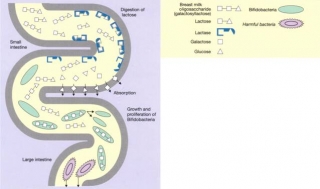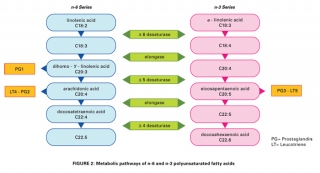Lipids
• DHA (docosahexaenoic acid),
which is abundantly present in the brain,
is essential for optimal brain, proper visual
and neural development.
• Appropriate balance of Omega 3 & 6
(Clinolenic & linoleic) fatty acids.
• Includes Choline, for cardiovascular and brain function,
and for cellular membrane composition and repair.
What is DHA?
DHA is a long-chain polyunsaturated fatty
acid (LCPUFA) of the n-3 or omega-3 type
found most abundantly in the brain and human
breast milk.
As a major constituent of human cellular membranes
in the brain, DHA is essential for optimal brain function,
and proper visual and neural development.
Oily fish, like salmon, mackerel, sardines, herring and
certain types of tuna, are the best sources of DHA.
Figure 1: Metabolic pathways of n-6 and n-3 polyunsaturated fatty acids
The composition of linoleic acid (n-6 fatty acid) and
α –linolenic acid (n-3 fatty acid) intake is important
due to their competitive metabolic nature towards
each other – see Figure 2.
SUPER KID-plus is formulated to have an adjusted linoleic
acid : α –linolenic acid ratio of 10 : 1.
Figure 2: Metabolic pathways of n-6 and n-3 polyunsaturated fatty acids


